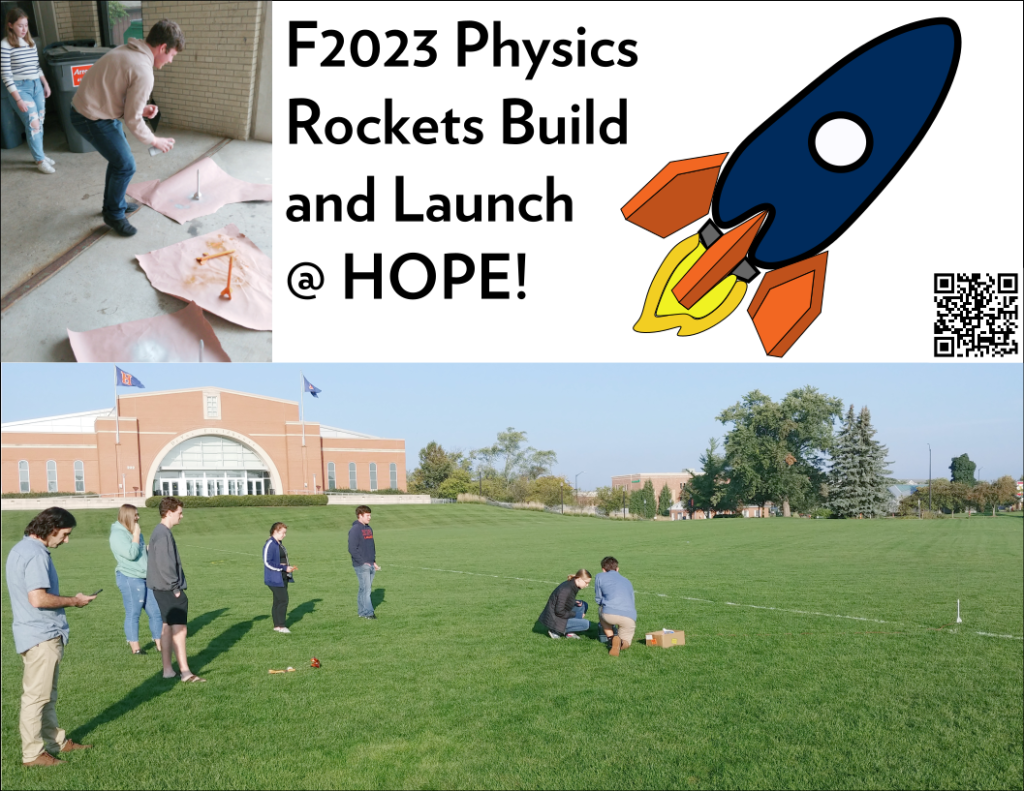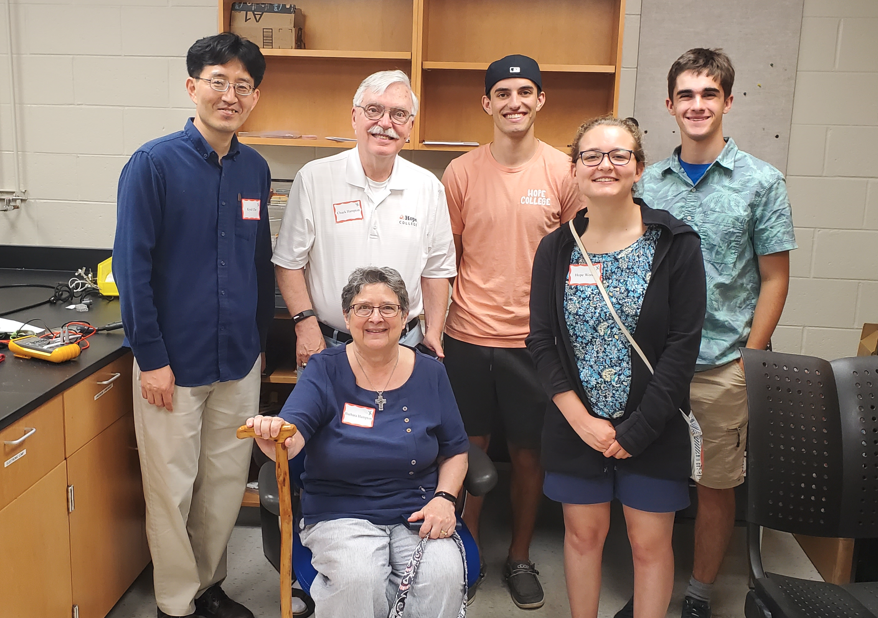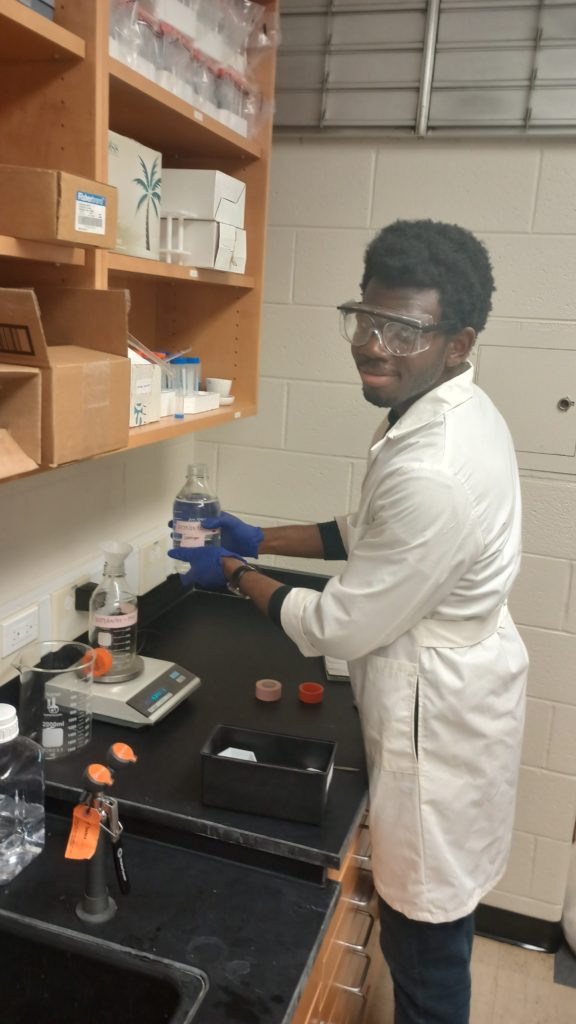
Upper left: Nate (Hope’25) sprays on a final coat of silver paint. Lower: Trevor (Hope’27) shows the launch controls to Elianna (Hope’25).

The donors of “Dr. Jennifer Hampton Summer Research Fund” (Barbara and Chuck Hampton) visited a Physics research group (superconductivity group led by Dr. Kyuil Cho) and met this year’s recipient (Hope Weeda, Hope’26) and other group members: Joey Fogt (Hope’26) and Trevor Harrison (Hope’27). June 22, 2023.

Godswill (Hope’26) is continuing Hope College Particle Accelerator Research. Here he is finishing mixing up some Stannous fluoride standards which are much safer then PFOA. PFOAs are carcinogenic fluoride compounds that contaminate the environment. He is using the particle accelerator to see if he can quantify PFOAs to parts per billion.